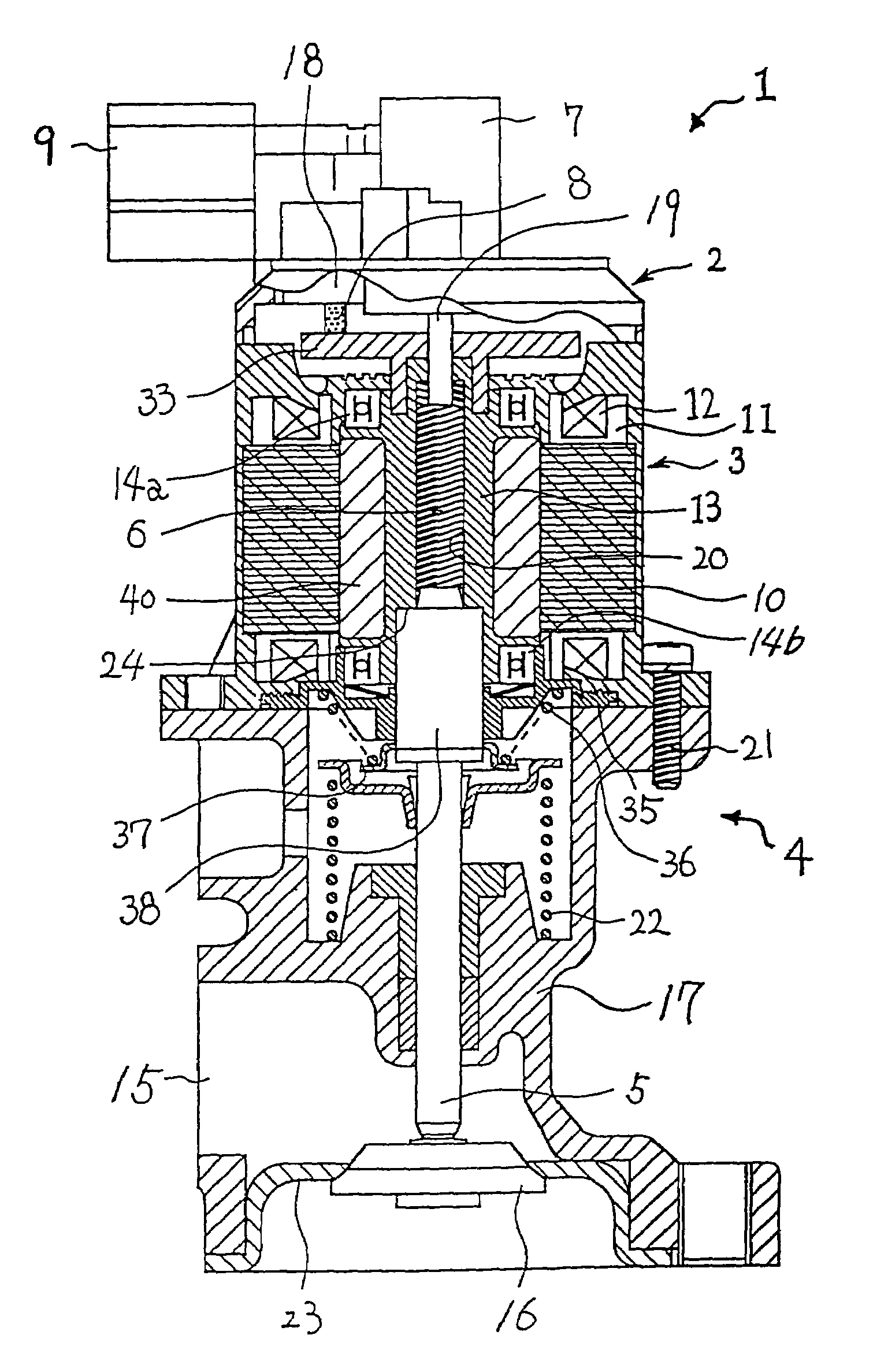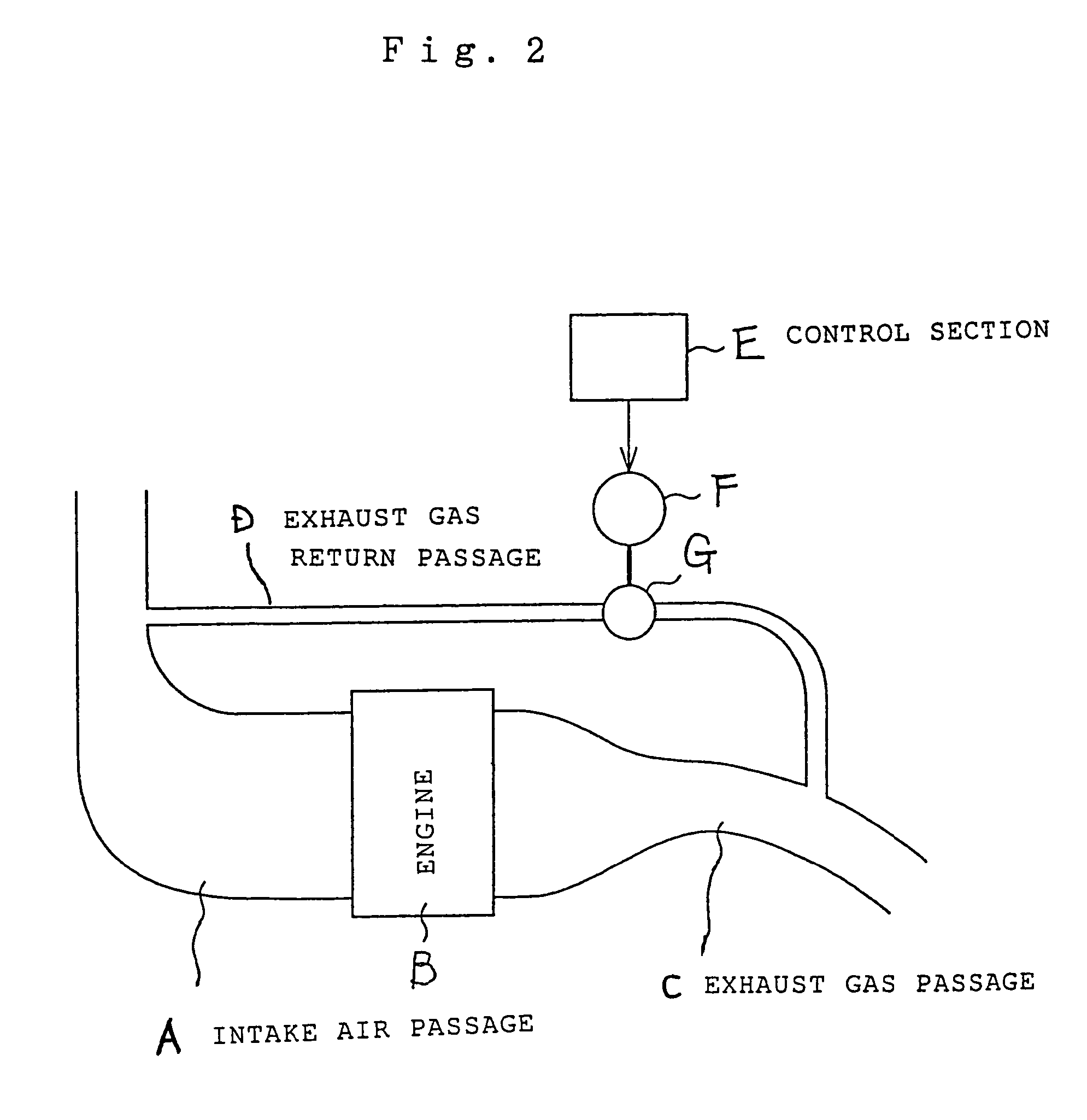Motor
a motor and motor body technology, applied in the field of motors, can solve the problems of increasing the sliding resistance of the rotor, affecting the performance of the motor, so as to prevent the flow of fused resin, and improve the air tightness
- Summary
- Abstract
- Description
- Claims
- Application Information
AI Technical Summary
Benefits of technology
Problems solved by technology
Method used
Image
Examples
embodiment 1
[0049]FIG. 1 is a sectional view of an EGR-V in which a motor according to Embodiment 1 of the present invention is used, and FIG. 2 is an explanatory diagram for explaining an EGR system. FIG. 3 is a partially sectional view of a motor portion of the EGR-V, and FIG. 4 is an external perspective view of the motor portion.
[0050]FIG. 5 is a top view of a stator portion according to Embodiment 1, and FIG. 6 is a sectional view of the mentioned stator portion.
[0051]FIGS. 7, 8, and 9 are sectional views of modifications each showing a configuration of an upper face of the stator portion.
[0052]FIG. 10 is a sectional view showing a structure of fitting a boss to a lower part of the stator.
[0053]FIG. 11 is an explanatory view for explaining how a cover of an energizing part and an outer wall of the stator are welded together, and FIG. 12 is a view for explaining a portion where a wire is led out.
[0054]FIGS. 13 to 17 are perspective views of modifications each showing a protrusion formed at ...
PUM
 Login to View More
Login to View More Abstract
Description
Claims
Application Information
 Login to View More
Login to View More - R&D
- Intellectual Property
- Life Sciences
- Materials
- Tech Scout
- Unparalleled Data Quality
- Higher Quality Content
- 60% Fewer Hallucinations
Browse by: Latest US Patents, China's latest patents, Technical Efficacy Thesaurus, Application Domain, Technology Topic, Popular Technical Reports.
© 2025 PatSnap. All rights reserved.Legal|Privacy policy|Modern Slavery Act Transparency Statement|Sitemap|About US| Contact US: help@patsnap.com



